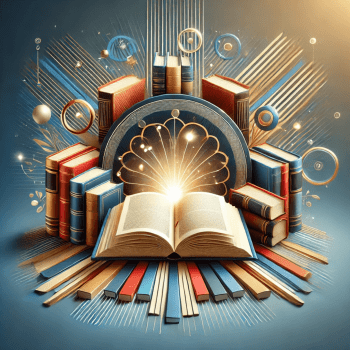In early January I received a call from a nearby community college. They had a 15-week undergraduate World Religions course starting in a little more than three weeks that needed an instructor. Our first live Zoom class session was this past Wednesday, and our focal question was “What is religion?” I also added two crucial follow-up questions: “Who benefits?” and “Who decides?” You get very different answers to the question, “What is religion,” depending on whether you ask, for example, a fundamentalist Christian, a Wiccan (from the Pagan tradition), or a member of an Ethical Humanist congregation. A fundamentalist Christian might tell you that religion is primarily about believing the right thing about Jesus. A pagan, however, might tell you that religion is more about performing a ritual correctly. Different still, an Ethical Culturist might tell you that religion is about taking the next right action.
If we seek to develop a definition of religion that accounts for all of these world views and more, we begin to realize that it really matters who is in the room. As the saying goes, “If you aren’t at the table, you might be on the menu.” Along these lines, I would like to invite us to spend a few minutes reflecting on this truth from the perspective of the Buddhist tradition. Similar to “What is religion?” generally, you can get very different answers to “What is Buddhism?” depending on whether you ask, for example, a conservative Asian monastic, a secular Western mindfulness teacher, or a New Age mystic.
The closer we look at the world’s religions, the clearer it seems that reality is so much more complex than any one monolithic tradition could ever cover. And we are usually on more accurate ground to speak in the plural instead of the singular—so Buddhisms rather than Buddhism, Christianities, Judaisms, Islams, Paganisms. While there are still times when it’s simpler to use religion singular as an umbrella term, using the plural periodically is a good reminder that each of the world’s religions contains a wide host of diverse traditions, practices, and beliefs—regardless of the fundamentalists who will try and tell you that their way is the only one right way.
Buddhism has grown and changed over the course of centuries—and we could trace similar evolutions for each of the world’s religions. Even at Buddhism’s beginning—2,500 years ago when Siddhartha Gautama (the historical Buddha) sat down under a Bodhi Tree in Bodh Gaya, India—he was not in a vacuum, and in many ways what we now think of as the Buddhist tradition began as a reform movement within the much older milieu of the Hindu traditions. And although there are strong family resemblances between various strands of Buddhism, there are also real differences from the ways Buddhist dharma has evolved and adapted within various cultures.
Consider that the centrality of advanced concentration states (or jhānas) in the Theravādan Thai Forest Tradition has a whole different set of focal points and aesthetics compared to the “just sitting” approach of Japanese Zen known as Shikantaza, And Tibetan Vajrayāna with its mantras, mandalas, and visualizations of deities is different still. Likewise, we could add into the mix the stripped down, secular Mindfulness-based Stress Reduction movement found here in the West. There are many more Buddhisms than these four examples, but you can already begin to notice the contours of the significant similarities and differences. I should also add that the situation is often less a matter of different Buddhisms being better or worse and more a matter of each tradition having its various strengths and weaknesses. And there are some real advantages to going deep into one or more traditions, as well as to being conversant with many lineages.
Part of why I’m bringing this up is that in recent years I have been grateful to notice the increasingly prominent influence within Western Buddhism of teachers from multicultural backgrounds. As we’ve been exploring, it makes a difference who is in the room, who is doing the teaching, and the content that is being taught.
The book that first challenged me to think more deeply about the perspectives of dismantling White Supremacy Culture in Western Buddhism is Radical Dharma: Talking Race, Love, and Liberation which was published in 2016 by three Black meditation teachers:
- Rev. angel Kyodo williams, the second of only three black women Zen Senseis, and author of the book Being Black: Zen and the Art of Living with Fearlessness (2002).
- Lama Rod Owens, who writes powerfully and compellingly about the intersections of his experiences as a Black American, a gay man, and a Buddhist Lama, who has completed a traditional three-year retreat in Tibetan Buddhism, and
- Jasmine Syedullah, a long-time meditator who is a professor of Africana Studies at Vassar College (209-210).
Each were inspired to have a series of public conversations about the intersections between Radical Black Thought and Buddhist traditions in the wake of the #BlackLivesMatter movement (107-108). In addition, I should mention another important trailblazing book that came out the year before from the Zen tradition: Zenju Earthly Manuel’s The Way of Tenderness: Awakening through Race, Sexuality, and Gender.
To say more about what Radical Dharma means, I’ll start with dharma. It’s an important word with a lot of nuances that make it difficult to render into English in a simple way. But two common translations often used in the Buddhist tradition are “truth” or “reality.” Now, some of you may be thinking, “Aren’t truth and reality the same regardless of who is teaching,” and that is the case to a certain extent. As Philip K. Dick used to say, “Reality is that which, when you stop believing in it, doesn’t go away.”
At the same time, quantum physics is one among many scientific insights which has shown us that subjectivity matters too. As with the glistening facets of jewels strung in a web—jewels that illuminate differently depending on the light and angle from which you are looking—it is often the case that different angles and facets of the dharma (of truth and reality) are revealed, depending on who is in the room doing the teaching and learning.
For anyone wondering, there is, of course, real benefit that can come from engaging with the Buddhist tradition for one’s own personal benefit, freedom, and liberation. But there is also so much more that is possible. To that larger aspiration for the collective liberation for all sentient beings—in which we all get free—let me add a little more about Radical Dharma.
Sensei angel Kyodo williams explains that Radical Dharma is radical for at least two reasons. First, etymologically, radical is derived from the Latin word radix, which means root, so Radical Dharma is about weeding out the root—the source—of problems (xviv). And that word root has a particular resonance in the Buddhist tradition in regard to the three kleshas, known as the three “poisonous roots”: ignorance, hatred, and greed. The good news is that there are also three corresponding antidotes of wisdom, compassion, and generosity.
Second, Radical Dharma is radical in the sense of being part of the Black Radical Tradition, which emphasizes that the liberation of Black people is one major key to collective freedom in which we all get free (xviv). The logic is that if we really do change the systems and structures of society so that Black people are free, then very likely those changes to the systems and structures will be of wide benefit to all. As the saying goes from the Indigenous Rights Movement, “If you have come here to help me, you are wasting your time. But if you have come because your liberation is bound up with mine, then let us work together.”
Using the lens of the three poisonous roots, we can now begin to better understand that subtitle of the book Radical Dharma: Talking Race, Love, and Liberation—the call to raise awareness about;
- the ignorance of racism – racism is a social construct, not a biological reality; all humans are 99.9% the same at the DNA level
- the persistence of racialized hatred – both individual bias and systemic racism, and
- the motivating role of racialized greed – the long history of enslaving and exploiting black bodies for capitalist profit.
Then, weaving in the antidotes can point us toward more hopeful ways forward through:
- wisdom – diversity, equity, and inclusion training
- compassion – opening our hearts in widening circles across difference, and
- generosity – noticing such truths as: “The loss of privilege is not reverse discrimination.”
Lama Rod Owen has written further about five main principles of practicing Radical Dharma:
- Contemplative – slowed down and not caught up (or hooked) on habitual patterns.
- Embodied – not just “neck up” in your mind or head
- Liberatory – about freedom, choice, and self-determination
- Collective – about more than just the individual.
- Prophetic – about truth-telling in the sense of a “Truth and Reconciliation” process (5).
These five points are beautiful examples of what we can learn from the Buddhist tradition when it is taught from the particular perspective of the Black Radical Tradition.
To create long-lasting change, it’s important to realize that Institutional bias is about much more than individual prejudice (or lack thereof). It’s also about much more than the conscious, intentional, aspirational White Supremacist attitudes of people carrying Confederate flags while storming the U.S. Capital Building on January 6, 2021. Instead, very often, many instances of bias and racism are about the much more insidious, subtle, unconscious bias arising in White Supremacy Culture.
In practice, if historically white institutions don’t intentionally take steps to change their systems and structures to be more welcoming, diverse, and multicultural, then the tendency will be that cultures and institutions will unintentionally revert back to practices that support historically privileged individuals and groups–and thus drift back toward being more of a white monoculture instead of forward toward a multicultural beloved community. As the saying goes, one definition of insanity is “doing the same thing and expecting a different result.” So what might we do differently to achieve a more inclusive, diverse, and multicultural result?
If you want to dive into the details of how this dynamic has been playing out in Western Buddhism, I highly recommend chapter 5 (“The Dukkha of Racism”) in Ann Gleig’s invaluable book American Dharma: Buddhism Beyond Modernism. For our purposes, I’ll limit myself to one case study of the influential two-year Community Dharma Leaders training program at Spirit Rock, a widely regarded retreat center just north of the Bay Area in California. In the first decades of the twenty-first century, the first two cohorts in the Community Dharma Leaders (CDL) training program—CDL2 (2004-2006) and CDL3 (2007-2009)—included an average of 6% people of color. When they made some institutional changes to intentionally recruit and support people of color, their diversity numbers multiplied sixfold:
- CDL4 (2010-2012): 37% BIPOC (“Black, Indigenous, People of Color”)
- CDL5 (2013-2015): 40% BIPOC (168).
Together with similar systemic changes at peer institutions, the result “will mean an extraordinary increase of 330% in the number of teachers of color in the Insight community” (171).
Institutional changes included:
- reserving spots for people of color,
- learning tools reflecting intercultural competencies (to create more inclusive and welcoming spaces for a wider diversity of people),
- funding scholarships specifically for people of color (223-233).
If you are curious to learn more about recommended institutional changes to dismantle White Supremacy Culture and build up a multicultural beloved community, there’s a great ten-page appendix in Larry Yang’s important book Awakening Together: The Spiritual Practice of Inclusivity and Community.
For those of you curious to learn more about Radical Dharma, let me recommend more books that are accessible places to start. One I mentioned earlier is Lama Rod Owens’ new book Love and Rage; The Path of Liberation through Anger. There is often a misunderstanding that spirituality and anger don’t mix. In contrast, Lama Rod powerfully reminds us that it is right to be angry at injustice. Anger can be a clue that our individual or societal boundaries have been violated, and that emotional power can fuel our work for justice. Especially when channeled through love, anger can point us toward the truth of Dr. Cornel West’s words that, “Tenderness is what love feels like in private, and justice is what love looks like in public.”
I also recommend Sebene Selassie’s new book You Belong: A Call for Connection. Selassie describes herself as a “nerdy, Black, immigrant, tomboy, Buddhist weirdo.” Selassie adds that the subtitle of her book could be “A Call to Remember the Inherent Connection with Everything Within Which You Always Already Exist,” and her book is an invitation to cultivate a felt sense of interdependence in your direct experience (168).
Beyond books, for those of you who feel like you could use some support in starting, restarting, or catalyzing your meditation practice, I should also give a shout out to the Ten Percent Happier meditation app that regularly does a great job centering meditation teachers of color.
For now, I’ll give the final word to Ruth King from her essay in the excellent new anthology Black and Buddhist: What Buddhism Can Teach Us about Race, Resilience, Transformation, and Freedom:
My advice: Practice the dharma, then do your best. Grieve, rest, keep hate at bay, and join with others for contemplation and refuge. Don’t get too far ahead of now. This moment is enough to digest. Sit, breathe, open. Don’t be a stranger to moments of freedom that may be flirting with you. Allow distress to teach you how to be more human. Sit in the heat of it until your heart is both warmed and informed, then make a conscious choice to be a light. (174)
The Rev. Dr. Carl Gregg is a certified spiritual director, a D.Min. graduate of San Francisco Theological Seminary, and the minister of the Unitarian Universalist Congregation of Frederick, Maryland. Follow him on Facebook (facebook.com/carlgregg) and Twitter (@carlgregg).
Learn more about Unitarian Universalism: http://www.uua.org/beliefs/principles












